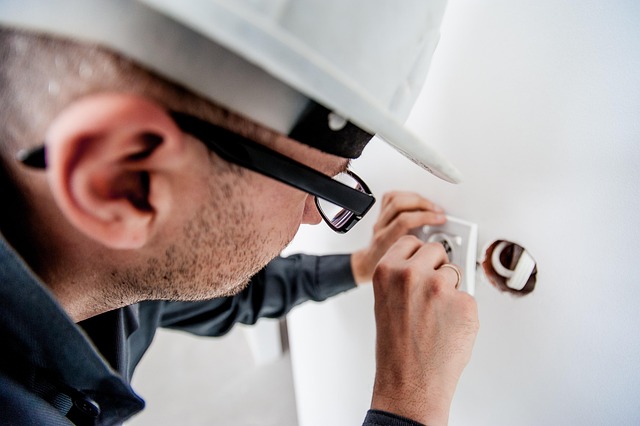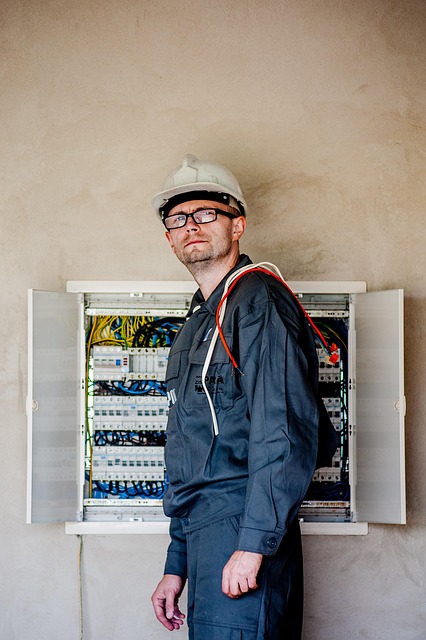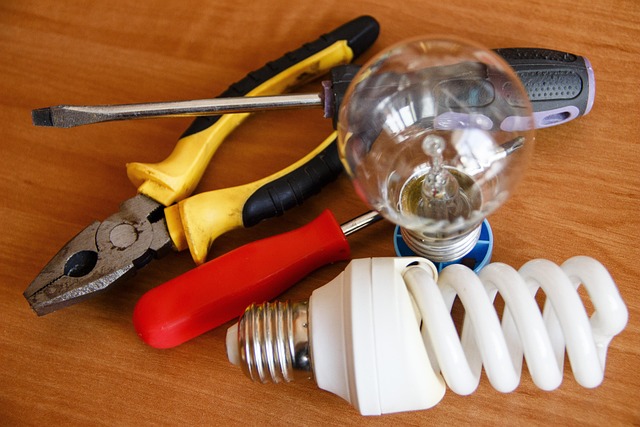Smart home systems, integrating devices like lighting, thermostats, security cameras, and door locks, have revolutionized living spaces. Electricians play a crucial role in this digital transformation, offering automation and enhanced security through Zigbee, Z-Wave, and Thread protocols. They ensure safe installations, collaborate with installers for tailored systems, and maintain high safety standards. A balanced approach combines security features like motion sensors and smart locks with automated devices to create an illusion of occupancy, providing convenience and peace of mind via smartphone monitoring.
“Transform your home into a smart, efficient, and secure space with the help of a skilled electrician. This comprehensive guide, ‘Understanding Smart Home Systems,’ explores the integral role electricians play in installing and integrating cutting-edge technology. From security cameras to automated lighting, discover how professionals ensure a seamless, safe, and energy-efficient smart home setup. Learn best practices for a professional installation, empowering you to make informed choices.”
- Understanding Smart Home Systems: A Comprehensive Overview for Electricians
- The Role of an Electrician in Installing and Integrating Smart Home Technology
- Security and Automation: Best Practices for a Professional Smart Home Setup
Understanding Smart Home Systems: A Comprehensive Overview for Electricians

Smart home systems have revolutionized the way we interact with our living spaces, offering unparalleled automation and enhanced security features. As an electrician, understanding these systems is crucial in today’s digital era. These integrated networks connect various devices, from lighting and thermostats to security cameras and door locks, allowing for centralized control and customization. By mastering smart home technologies, electricians can provide clients with efficient, safe, and modern living environments.
For electricians, familiarizing themselves with the latest smart home protocols and standards is key. This includes learning about popular platforms like Zigbee, Z-Wave, and Thread, which enable seamless communication between devices. Moreover, staying informed about security protocols ensures that installations meet high safety standards, protecting sensitive data and private spaces. By embracing these advancements, electricians can offer cutting-edge solutions, catering to the growing demand for smart, secure homes.
The Role of an Electrician in Installing and Integrating Smart Home Technology

When it comes to installing smart home systems, an electrician plays a pivotal role in ensuring the seamless integration of technology into your living space. These professionals are equipped with the technical knowledge and skills necessary to handle the complex wiring and electrical requirements of modern smart home devices. An electrician can assess your property, design an efficient wiring layout, and install the necessary components for automation and security systems.
They work hand-in-hand with smart home installers or technicians to understand the specific needs of each client. By collaborating, they can create a customized setup that incorporates sensors, cameras, lights, and other devices while adhering to local electrical codes and safety standards. An electrician’s expertise guarantees the proper grounding, power supply, and connectivity required for optimal performance and user safety.
Security and Automation: Best Practices for a Professional Smart Home Setup

When it comes to installing smart home systems, balancing security and automation is key. A professional electrician should prioritize integrating robust security measures from the outset, such as motion sensors, smart locks, and surveillance cameras linked to a central control panel. This not only ensures a secure environment but also provides peace of mind, allowing homeowners to monitor their property remotely via their smartphones.
Automation should complement these security features rather than overshadow them. Schedules for lights, thermostats, and appliances can be set to optimize energy efficiency and convenience. Voice-controlled assistants can further enhance the experience by enabling hands-free control over various devices. However, it’s crucial to maintain a balance, ensuring that automated routines do not inadvertently alert potential intruders of an empty home but instead create the illusion of occupancy through carefully timed lights and sounds.
In conclusion, electricians play a pivotal role in the installation and integration of smart home systems. By understanding the intricacies of these systems and adopting best practices, they can ensure secure and automated homes for their clients. Embracing smart home technology not only enhances convenience and comfort but also adds value to properties, making it a rewarding field for skilled professionals like electricians.
